All About Leisure Batteries
What sort of leisure battery to choose? How much do you need to spend? How to chose the best battery for your needs. There’s more to battery technology than you’d at first think.
In the first of two features, technical writer Terry Owen looks at what you need to consider to select the right battery for your needs.
Which leisure battery for you?
For many of us a leisure battery is a 'fit and forget' piece of equipment – until it stops working, that is. This month we examine what a leisure battery actually does and how we can choose one best suited to our individual needs.
A leisure battery has two functions to perform. First, it gives 12-volt power when no mains hook-up is available. Second, it acts as a reservoir, smoothing out the peaks and troughs on the caravan's 12-volt power supply/charger system.
It is for this latter reason that some caravan handbooks say things like "The 12-volt system is designed to run with a leisure battery in-circuit and should not be turned on without one connected".
Different caravans have different charger systems, though; these can vary from year to year and even caravan model to model, which is why it’s important to follow the advice in the handbook.
For the 99.9% of us who fit a leisure battery the next questions are: what sort, and how much should we spend?
The vast majority of leisure batteries use lead acid technology. We'll look at this in more detail shortly. First, it's important to understand the fundamental difference between car batteries and leisure batteries.
Car battery vs. actual leisure battery
A car battery is designed to produce a high peak current to turn an engine over. Depending on the engine design and ambient temperature, it may require a cranking current of up to 1000 amps. This power is then quickly replenished by the vehicle's alternator once the engine is running.
Car batteries provide for start-ability more than deep-cycle-ability. To this end, they have lots of plates giving a large surface area for the high cranking currents. The more plates there are, the thinner they need to be to fit into the battery case.
Leisure batteries are designed to provide a very much smaller flow of current (one to five amps) over an extended period without a recharge. The plates do not need a high total surface area, but they do need plenty of 'meat' in the form of lead to keep the current flowing over time.
When the discharge reaches a certain level (typically 50%), you must recharge the battery. If it isn't, or if it becomes further discharged, the battery may be permanently damaged, losing some, or all of its ability to hold the charge.
Cheap so-called leisure batteries are often car batteries with a different label. Buying cheap batteries isn't necessarily a bad thing as long as you understand what you need for your style of caravanning.
Lead acid battery technologies
Leisure batteries fall into three main types - flooded, gel and AGM (absorbed glass matt). There is also a new technology called 'lead crystal'.
Flooded batteries
Flooded batteries are the most common type of lead acid battery. The name derives from the fact that the lead plates sit in a bath of sulphuric acid. Today many are low maintenance, requiring little or no topping up. They are low maintenance because of their calcium technology where trace amounts of calcium are used to replace the antimony traditionally found with the lead. Calcium reduces gassing and the rate of self-discharge of the battery.
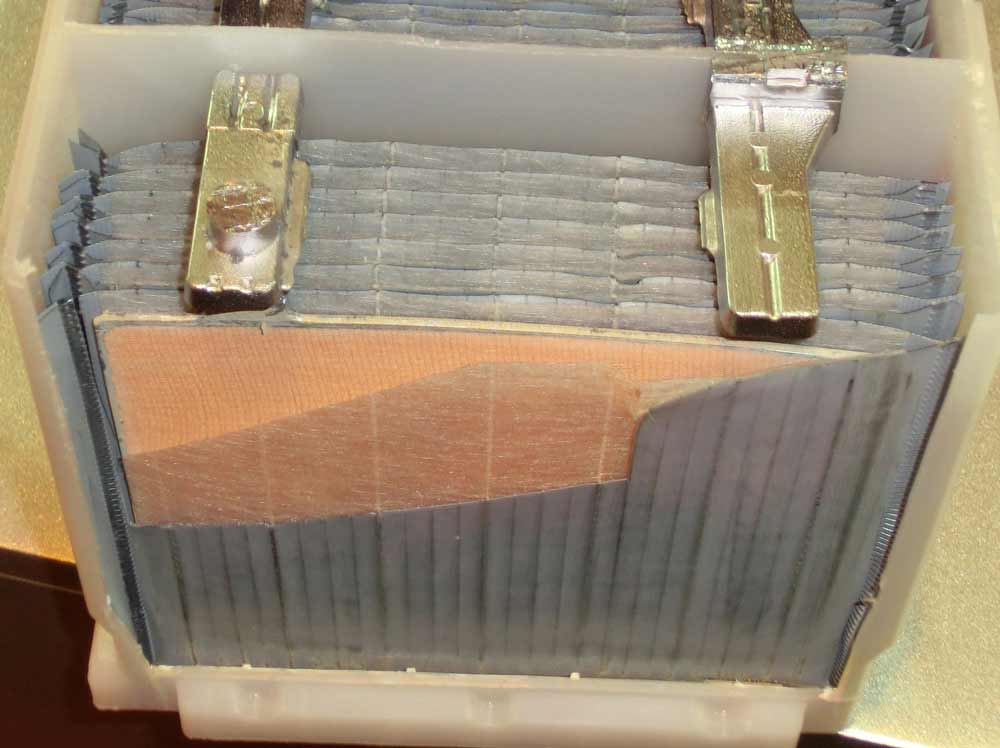
This cut away shows the plates that are submerged in acid
With a low maintenance regime, calcium technology extends the life of the battery. However, where an owner is prepared to spend more time maintaining the battery, one with antimony technology will last longer although it will require topping up from time to time.
Gel batteries
Gel batteries are similar to maintenance-free flooded types in their use of calcium, but silica gel is added to thicken the electrolyte and prevent it from spilling. It also helps to make the battery resistant to vibration. The design is such that any gases produced recombine back to water as long as the charge rate is not too high. As a safety measure, there is a valve to release any excess pressure. This type of battery is known as VRLA, standing for valve regulated lead acid.
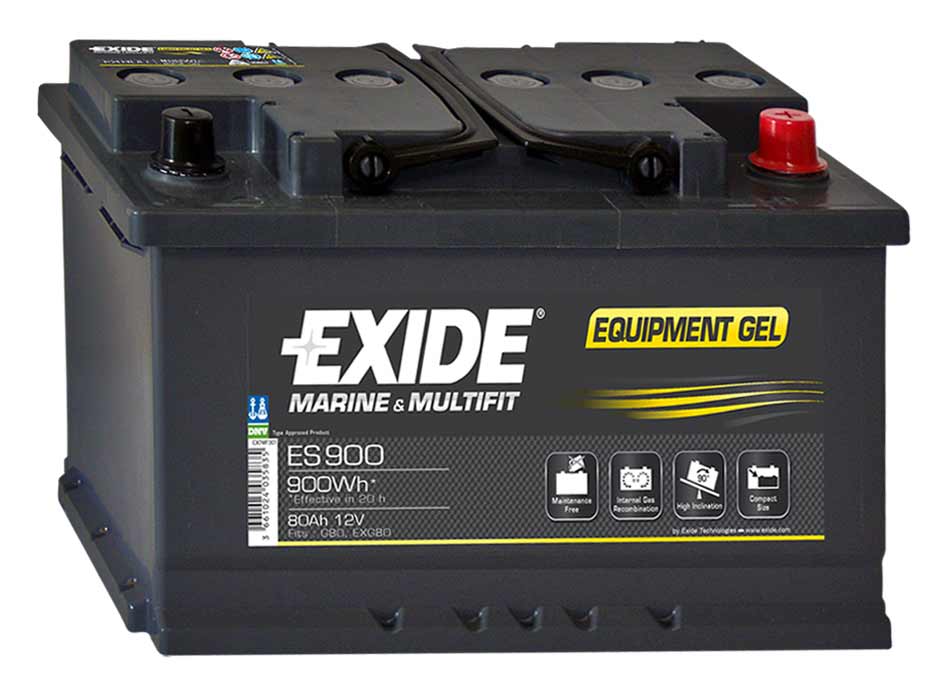
Gel batteries have a good service life
Gel batteries tend to cost quite a bit more than other types of lead acid battery, and offer less power for the same physical size and weight; something to bear in mind if you think your caravan may be approaching its MTPLM weight limit. On the other hand, they have an excellent service life and are tolerant of really deep cycling.
You can easily damage Gel batteries by overcharging, so it is important to check that your caravan's charger unit is suitable for use with gel batteries. Ask your dealer or the manufacturer of the charger.
AGM batteries are another form of VRLA battery using calcium technology. They first appeared in the 1980s but have become more popular in recent years, especially for cars using stop-start technology.
The electrolyte does not flood the cells but instead special glass mats absorb it, which sit tightly between the plates. This high packing compression improves the life of the battery and its gas recombination efficiency.
The plates may be flat, as in a conventional battery, or wound in a spiral. The mats let the plates to be close together without touching, giving the battery a small internal resistance. The result is more power and reduced recharging times.
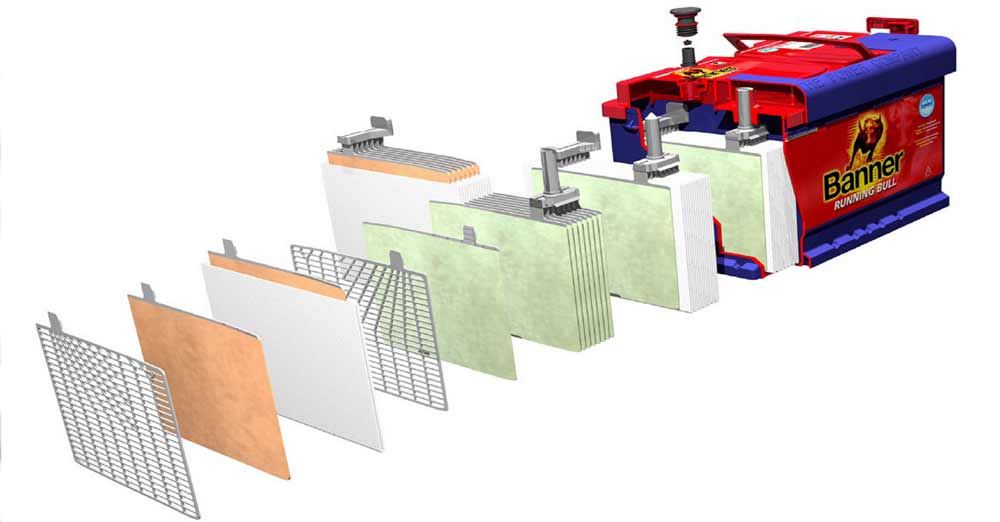
Micro porous glass mats separate the plates in an AGM battery that hold the all the electrolyte, so there is nothing to spill
AGM batteries have many of the attributes of gel batteries with none of the disadvantages. For this reason, they are superseding them in many applications. They're vibration resistant, spill-proof and maintenance-free and are also tolerant of high charge and discharge rates. They're suitable for use with the Chargers found in today's caravans and hold their charge better than flooded types. Buying the right battery is an important consideration for caravans in storage or where the battery is used to power a tracking device.
AGM batteries are exceptionally efficient at converting charging current into stored energy, a figure of 95% being typical. This efficiency compares to 80-85% for flooded types and 85-90% for gel types. AGM batteries are ideal for use with solar panels and wind generators where the supply of power may be limited.
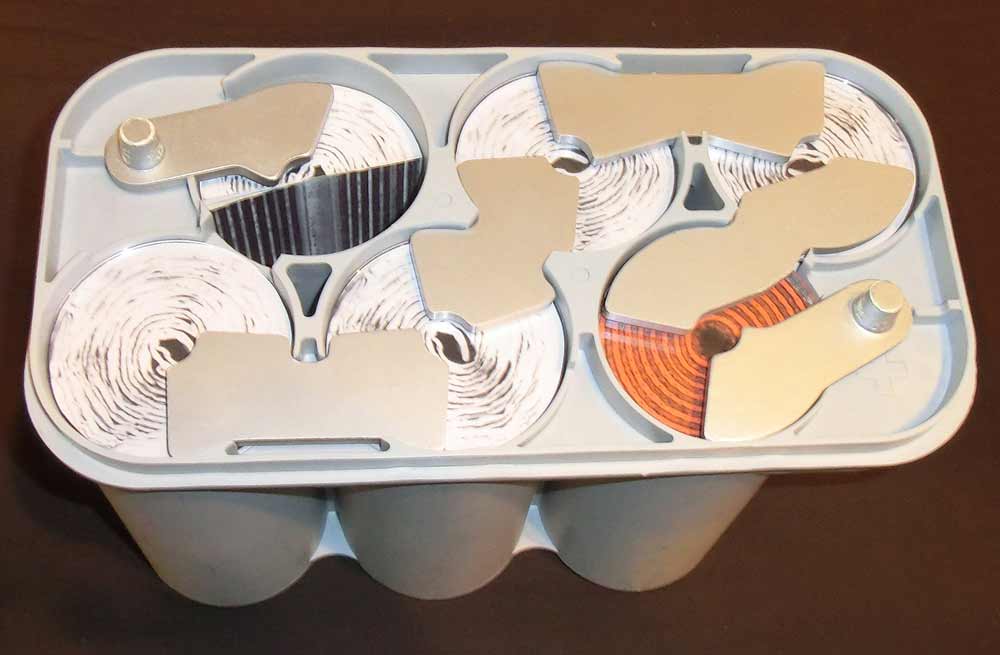
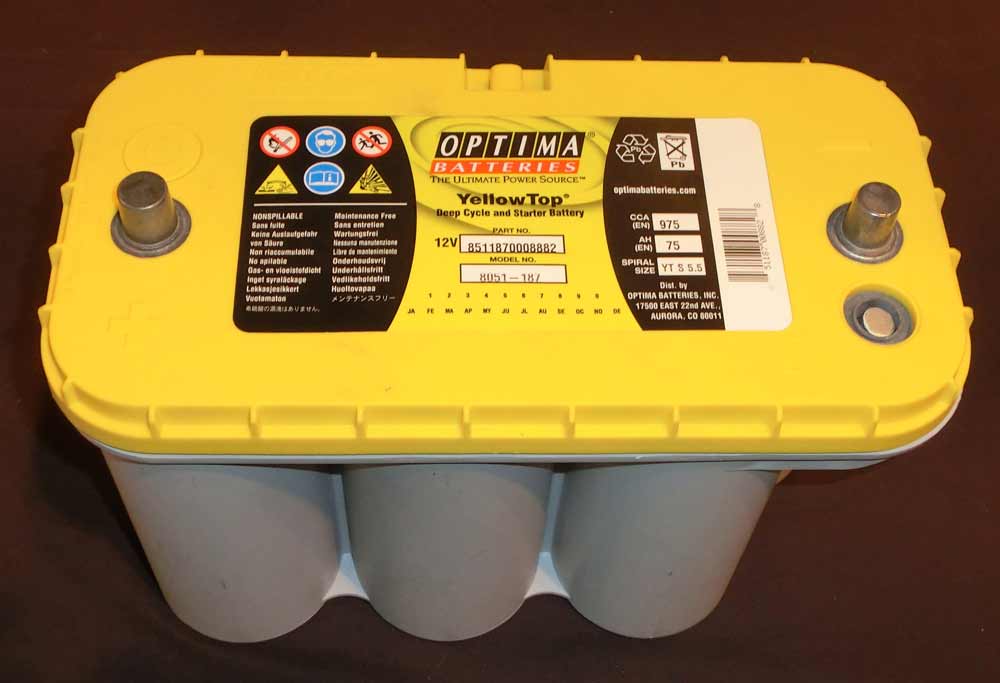
The top image shows a cut-away model of an Optima spiral wound battery. These were one of the earliest forms of AGM battery but are still popular today. Those with a yellow top are for deep cycling, but you can also use for starting
You sometimes see batteries advertised as being of the AGM/GEL type. The description could be because both are maintenance free VRLA types. But, in other respects, the two are entirely different so, if in doubt about what's on offer, buy elsewhere.
Lead crystal batteries
'Lead crystal' batteries have emerged onto the leisure market over the last year or so. The technology is similar to that of AGM batteries, but the mat is a new material, and the electrolyte contains silicon dioxide. After several charge and discharge cycles, the liquid electrolyte transforms into a crystallised state.
It is claimed the crystallised electrolyte fixes to the active material on the plates, enhancing the channel for ion exchange while effectively overcoming the loss of moisture, plate sulphation and loss of active material. Experts claim that service life of these batteries is twice that of regular lead acid types and that they have the ability recover to 100% capacity from a discharge down to zero volts.
The cells have entered the leisure market under the GALAX-E brand name. It remains to be seen if they catch on at around twice the price of a good quality flooded leisure battery.
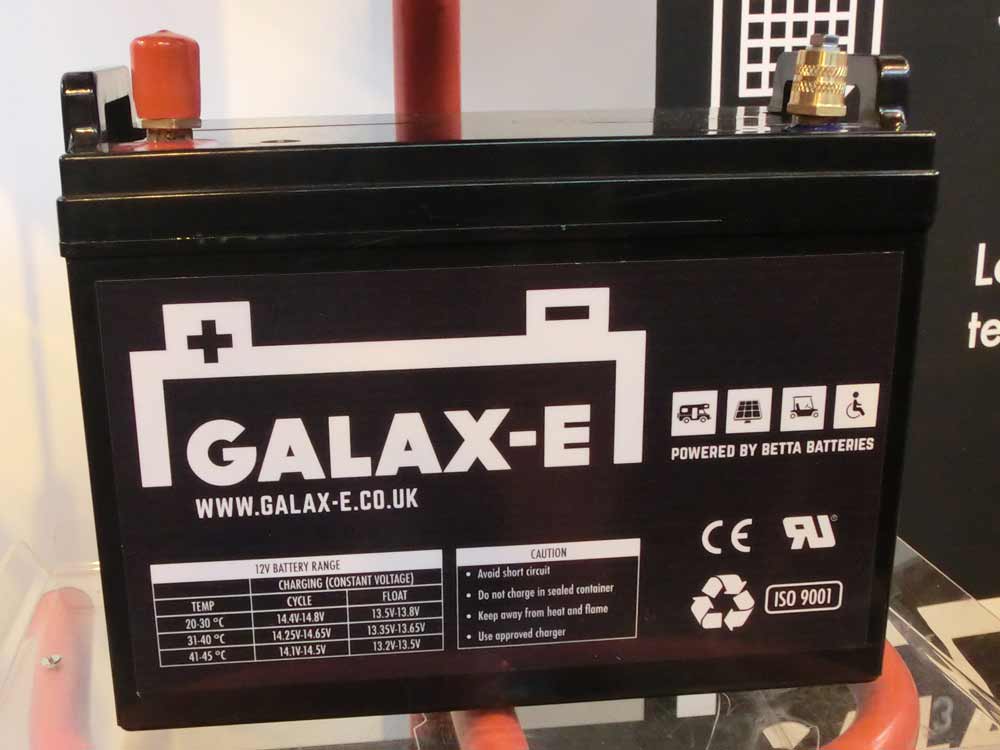
A lead crystal battery
NCC battery verification scheme
The whole business of leisure battery performance and labelling is quite a thorny subject. The problem is that you can't see inside a battery to determine how it's made. But even if you could, you'd need to be an expert to understand what you saw.
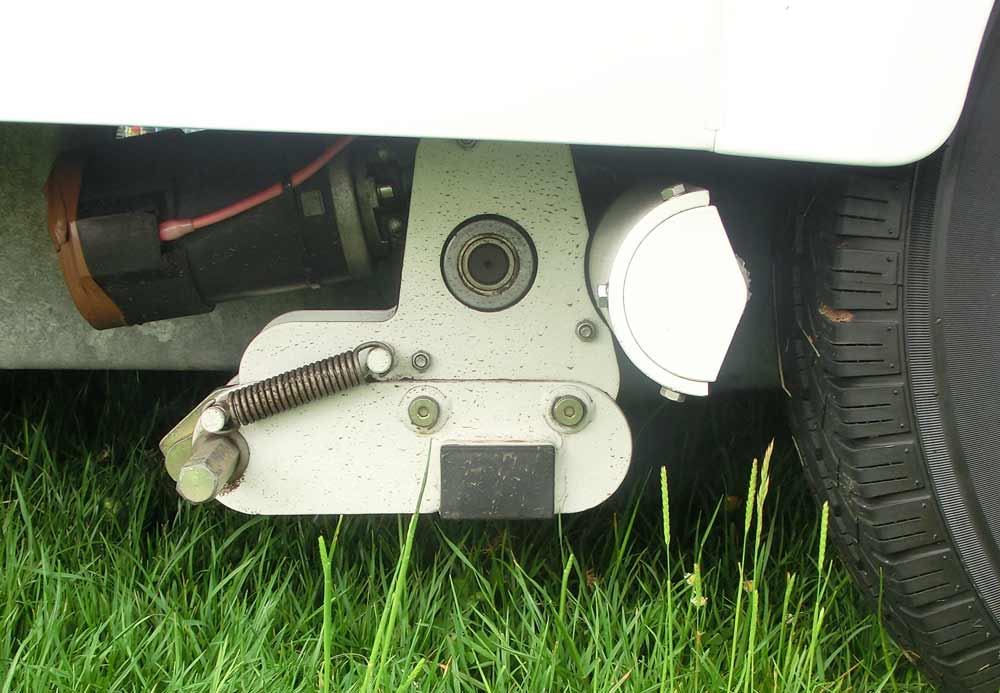
Movers are power hungry
Until recently the only thing to give a clue to possible performance was the weight of the battery. The heavier it is for a given amp-hour capacity, the better the battery is likely to be. Recognising these issues, the NCC (National Caravan Council) launched its battery verification scheme in October 2015. Under the scheme leisure batteries are labelled 'A', 'B' or 'C' according to their intended use:
Category A is the highest specification category and for users who either have large numbers of electrical devices or use their caravan or motorhome away from electrical hook-ups.
Category B is best for those that usually use electrical hook-ups but have high drain devices such as caravan motor movers.
Category C is for those that require a battery for occasional use to operate low drain devices such as lighting for short periods of time.
To be included, the manufacturers must submit the performance details of their batteries and they must be prepared for them to be independently tested. At the time of writing, three brands, Banner, Platinum and Yuasa, had signed up to the scheme, and we expect that more will soon follow.
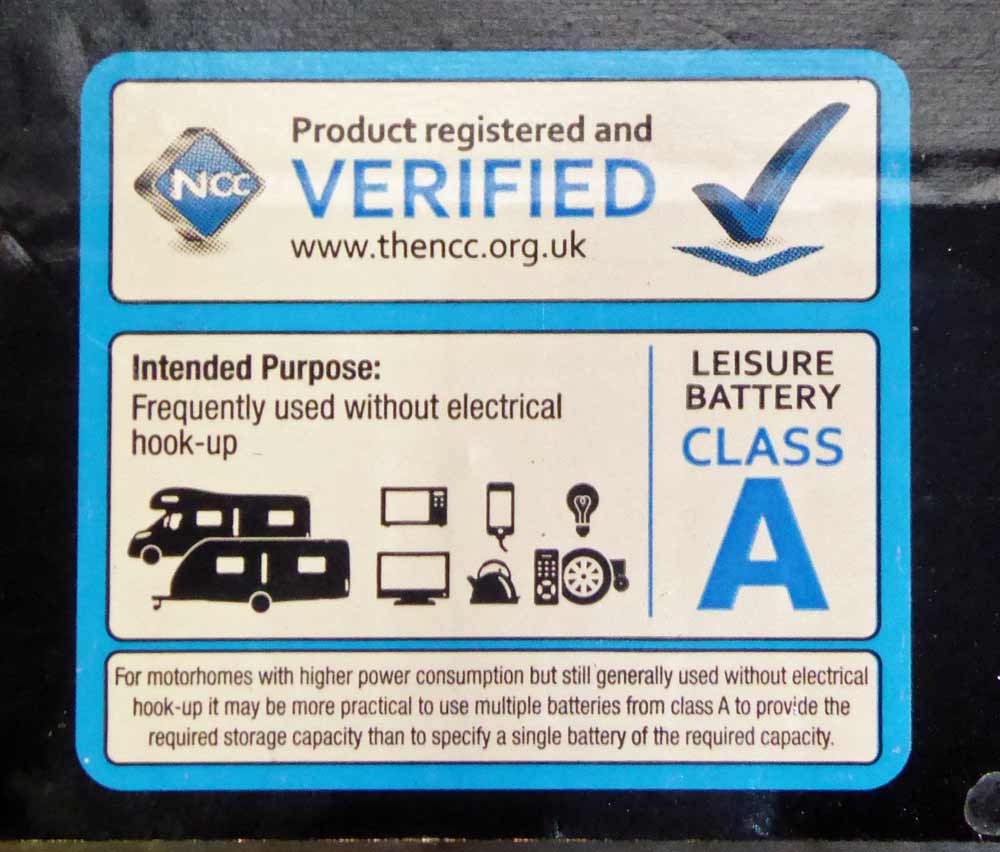
The NCC's battery verification tick logo and class rating
Understanding battery ratings
Industry rates batteries according to the amount of energy they store, which we express in amp hours so, in theory, a battery rated at 100 amp hours should be able to produce 1 amp for 100 hours or 5 amps for 20 hours.
In practice, the slower you discharge a battery, the greater the amp hour total it will produce. To make meaningful comparisons between one battery and another, manufacturers have adopted 20 hours as the standard discharge time. You should base all the amp hour ratings you see on this period, often referred to as the 20-hour rate.
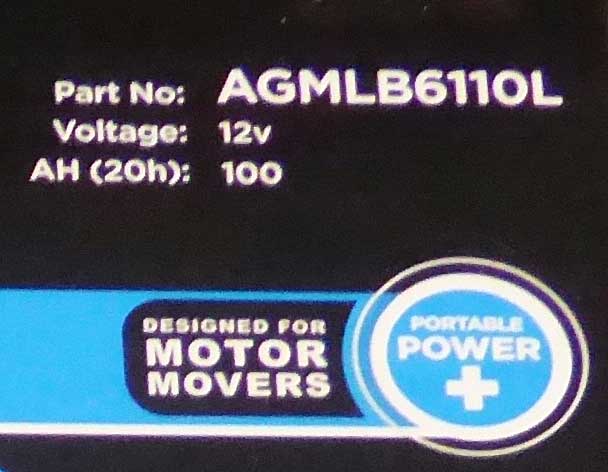
The label shows this battery can produce five amps for 20 hours, hence a rating of 100 amp hours
The amp hour rating is also dependent on the ambient temperature; the colder it is, the less a battery will hold. You measure battery amp hour ratings at 25 degrees C, which equates to a warm summer's day here in the UK. At zero degrees a battery's capacity is reduced by 20% - something to bear in mind if you're off the grid in cold weather.
Another point to consider with lead acid batteries is that only about half of the amp hour rating can be used. Why? Because, if you regularly discharge them below 50% of their capacity, permanent damage will result. AGM and gel types are more tolerant of this, but the general principle remains the same.
Lithium batteries
Lead-acid batteries have been around since the 19th Century, but the first commercial lithium-ion battery did not appear until 1991. Since then the technology has advanced rapidly with lithium batteries now powering everything from smartphones to hybrid cars and even aircraft standby systems.
Leisure batteries using this technology are now becoming more widely available. They are about half the weight of lead-acid batteries and have over twice the energy density. They also have a much longer life (maybe as much as ten times) and will tolerate regular discharging of up to 80% or more of their capacity. The latter means you can get away with a smaller battery since more of it is useable. What's more, the voltage holds up well as the battery discharges.
The downside to lithium batteries is their initial cost which may be ten times that of a good lead acid battery. Their price might seem prohibitive but when you factor in the longer life and other attributes the cost is more reasonable.
Just as with a lead acid battery, you can damage it if you fully discharged it. To prevent this many come with inbuilt electronic controllers that shut the output down when the charge level approaches a pre-determined point.
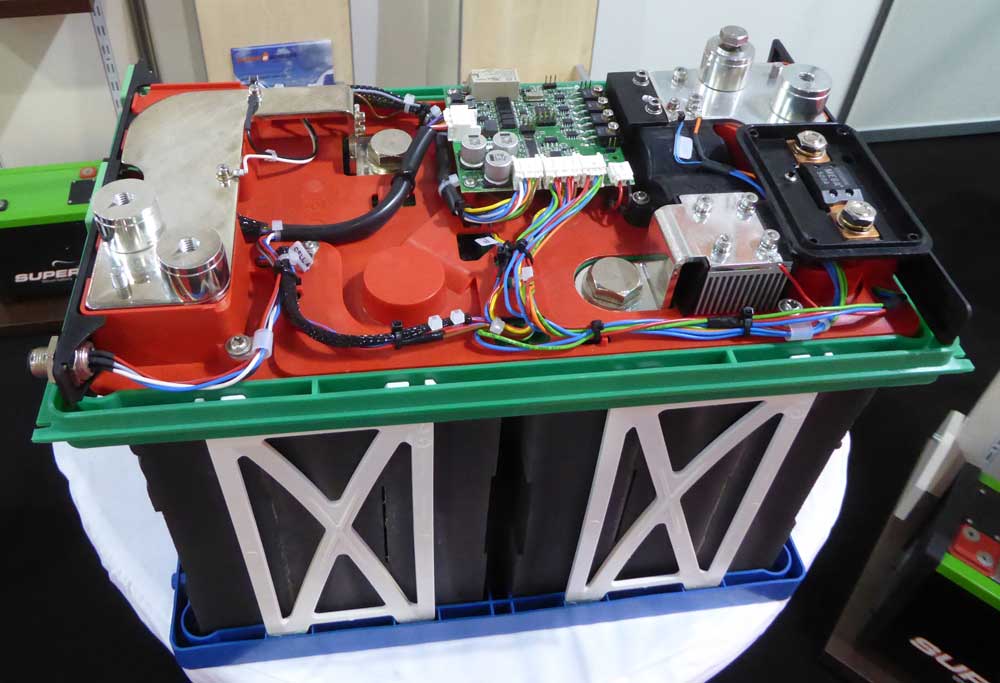
The top of this lithium battery has been cut away to reveal the charge control circuitry
You can use lithium iron phosphate batteries with standard chargers but, for best performance, the charger may need to be specially chosen or adjusted. For example, the Relion range of lithium batteries has a charge voltage of 14.6 volts and a float voltage of 13.8 volts.
The smart chargers supplied by Sargent Electrical Ltd. are set to 14.4 and 13.6 volts respectively but can be adjusted (by a competent person) to meet the slightly higher levels. If in doubt about what is on your caravan, consult the handbook or ask your dealer.
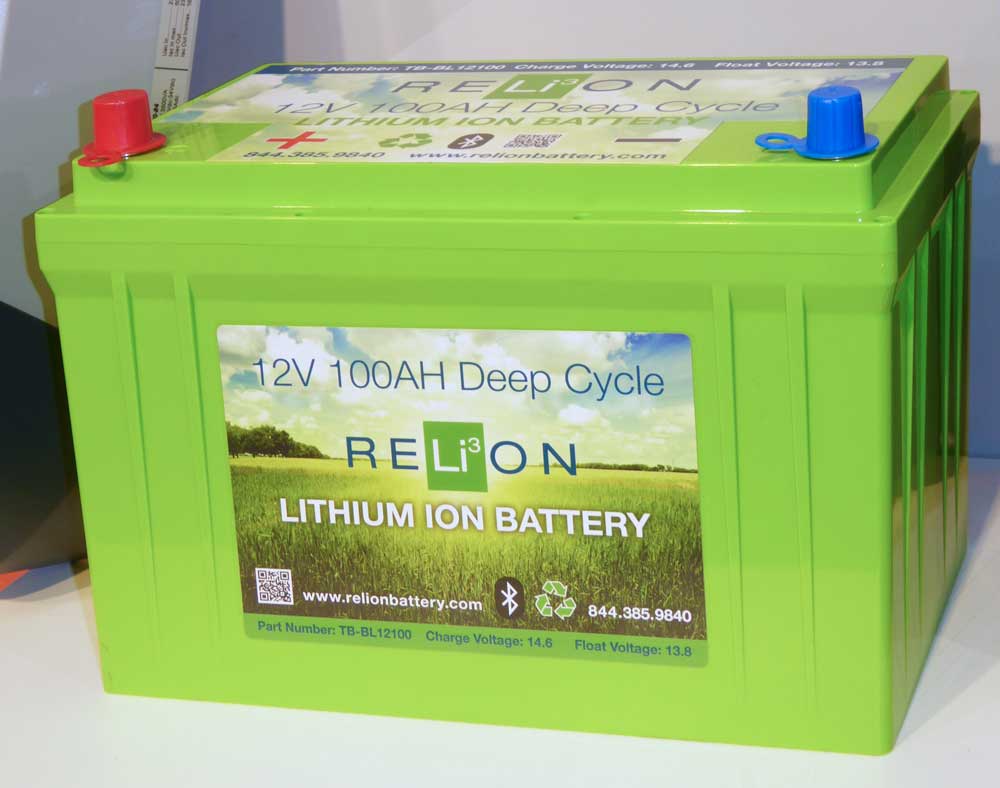
Lithium batteries are beginning to appear in the leisure market, but prices are likely to remain high
How much should you spend?
If you never caravan without a mains hook-up, don't waste your money on an expensive battery. A budget leisure battery will suffice, maybe even if you have a caravan mover. The key here is to use the mover sparingly and to recharge the battery soon afterwards. Such a battery may carry an NCC 'C' rating and will typically cost 50 pence per amp hour of capacity so expect to pay around £55 for an 110 amp hour model.
If you like to spend a few days 'off grid' or use a mover without being able to recharge the battery straight away, it's worth paying more to get one designed for deep cycling. Calcium technology batteries require little maintenance, but those with convention antimony technology will last longer and give better performance if you look after them. Look for an NCC 'B' rating and expect to pay about £1 per amp hour of capacity.
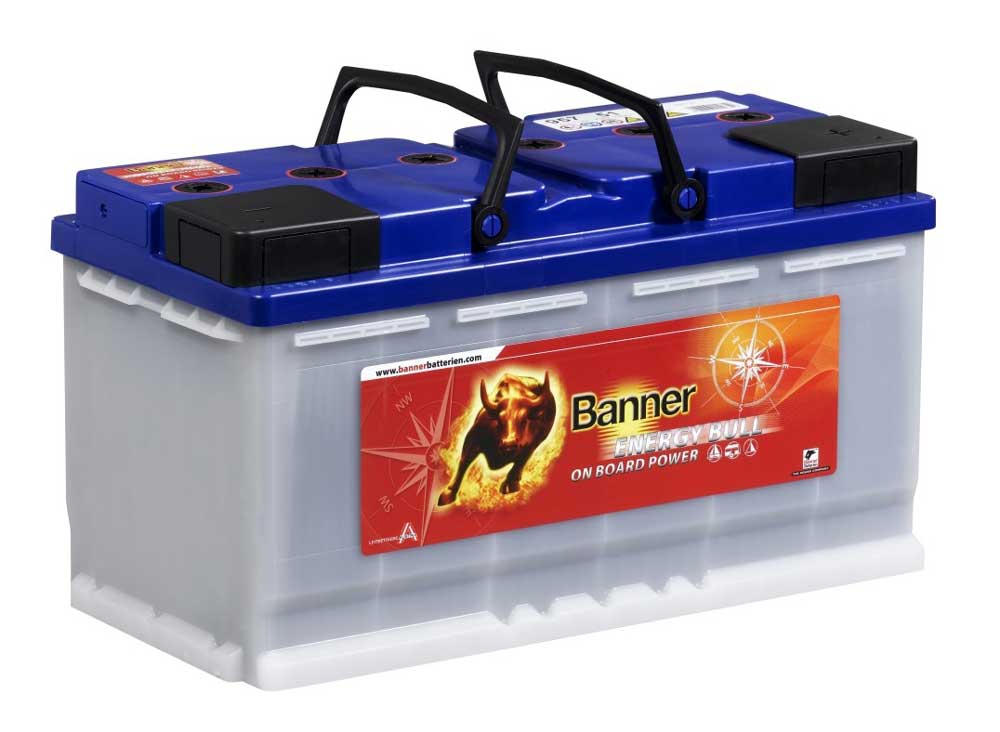
Banner's Energy Bull series of leisure batteries require a little maintenance but will repay you with a good service life
Those who have quad movers or who like to spend extended periods 'off grid' should consider an AGM battery. Look for an NCC 'A' rating and expect to pay up to £2 per amp hour for a good quality AGM battery such as the Running Bull range from Banner.
If you want the ultimate you could consider a lithium battery but bear in mind the need for an individual, or specially adjusted, charger to get the best out of it. Expect to pay £9-10 per amp hour.
Next, we'll take a look at caring for and charging your leisure battery - Click here to read Part 2!








Recent Updates
Caravan showers: all you need to know
In this guide, we’ll discuss the different types of showers, how they work, and how to fit an external shower point to your caravan ...
Caravan towing: all you need to know
Towing a caravan may seem daunting initially, but a few simple tips can make the journey enjoyable and ...
All you need to know about towbars & towballs
Flange, detachable, swan neck, retractable – towbar technology choice is bewildering. Don’t worry. We’ll ...
Caravan WiFi: everything you need to know
Caravan holidays are the ultimate way of getting away from it all, although we sometimes need a link to the ...
Caravan insurance: all you need to know
Navigating the world of caravan insurance can feel like a daunting task. Fear not, as this comprehensive ...
Buying a caravan: what you need to know
Let us guide you through some of the complicated things to think about when first looking at buying a ...
Caravan awnings: a buyers' guide
Caravan awnings are a fantastic addition to any caravan as they are one of the simplest, quickest and most ...
Caravan electrics: avoid tripping out
All caravan owners have overloaded their mains supply at some time. Here’s how to master caravan electrics ...
Caravan heating systems: a quick guide to caravanning warmth
When winter is here, you’ll be glad of a decent caravan heating system if you’re out touring. Here’s how the ...
Caravan damp: a complete guide
There's little more guaranteed to strike fear into the heart of a caravan owner than the word 'damp'. But if ...
Other Articles
Caravan jockey wheels: the definitive guide
A well-functioning caravan jockey wheel can make all the difference to manoeuvring away from the towcar, especially if you don't have a caravan mover ...
Caravan cooking recipes
Caravan cookery inspirational ideas. No need to stress out in the kitchen with these quick and easy ...
Caravan bike racks: a complete guide
Exploring the beautiful surroundings while on a caravan trip is undeniably one of the greatest joys of the ...
Caravan solar panels: all you need to know
Whether you dream of roaming off-grid or just fancy reducing your carbon footprint, fitting solar panels to ...
The ultimate guide to caravan layouts
Choosing the right layout or floorplan of your caravan is an all-important part of the buying process – find ...
A guide to seasonal caravan pitches
Our in-depth guide to finding and securing seasonal caravan pitches on your favourite campsite ...
Caravan weights and payloads: a quick guide
The terminology of caravan weight – MIRO, MTPLM, noseweight, kerbweight, payload, weight plate upgrade – is ...
The ultimate guide to caravan motor movers
Caravan motor movers: everything you need to know about remote control caravan manoeuvring ...
Caravan cleaning: All you need to know
Whether you’re taking the caravan out for the first time or it’s just in need of a spruce up, our guide will ...
18 essential items for camping with your dog
Camping is for the whole family – including our four-legged members. Here's what you'll need to keep your dog ...